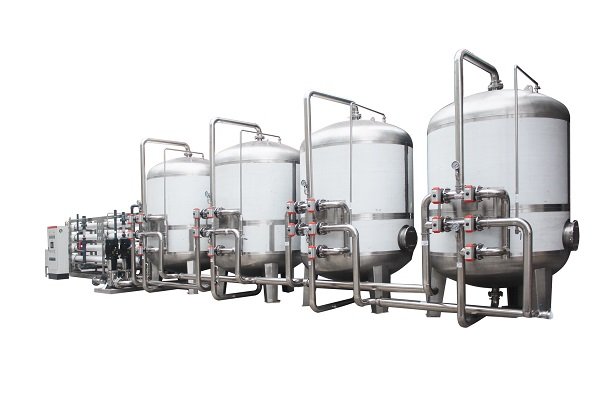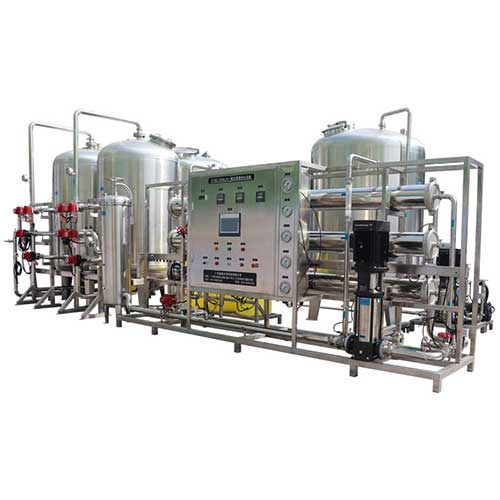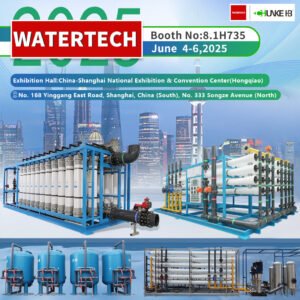
When it comes to industrial steam boilers and water purification, the term “Boiler RO” or “reverse osmosis” is frequently encountered. However, the significance of this phrase might not be immediately apparent. In this comprehensive guide, we delve deep into the world of boiler reverse osmosis systems, exploring what they are, why they’re necessary, and how they can enhance boiler performance.
1. Decoding Reverse Osmosis
Reverse osmosis (RO) is a water purification technique primarily used to remove mineral content and other impurities. It is commonly employed to transform seawater or brackish water into fresh water, making it suitable for drinking or enhancing its taste by mineral removal.
2. Boiler RO: A Crucial Component for Boiler Systems
Reverse osmosis feed water for boilers is crucial for optimum boiler performance, even for heating-only systems. When integrated with a boiler system, reverse osmosis serves two key purposes:
a) Purification of water for cooking and drinking:
Purification of water for cooking and drinking: For instance, if water is used in food service or brewing applications, reverse osmosis ensures that the hot water is safe for consumption and does not interfere with the taste of the product.
b) Prevention of mineral buildup in boilers:
As water boils, it transforms into steam and disperses into the air as a gas. However, salts and other minerals do not evaporate alongside the water. Over time, these minerals can accumulate as scales within the boiler system, leading to obstructions, inefficient performance, and perhaps system failures. Boiler RO removes mineral content before the water enters the feedwater tank, promoting smooth boiler operation.
3. The Necessity of Reverse Osmosis Systems
Even though local tap water is usually fine for drinking and other domestic uses, it still contains sodium, minerals, and other impurities that can affect the taste of the product or cause buildup in the boiler system. Therefore, to ensure optimum taste for food/beverage production and top performance of the boiler, it’s vital to include a reverse osmosis system to purify incoming water.
4. The Contribution of Boiler RO to High-Quality Steam Production
The quality of boiler feedwater significantly impacts the purity of the steam, which in turn influences the speed and efficiency of operations. Therefore, boiler pretreatment equipment, including reverse osmosis units, is essential for improving boiler steam quality and preventing scaling, fouling or foaming.
5. Reverse Osmosis for Boiler Feedwater: Enhancing Steam Quality
Boiler feedwater sources include returning condensate and makeup water. The quality of the boiler’s makeup water is critical as it can impact the entire system. One effective method of improving feedwater quality and avoiding fouling, scaling, and corrosion is through reverse osmosis.
By eliminating up to 98% of the impurities and dissolved solids, reverse osmosis can reduce the conductivity of the boiler makeup water, thereby allowing a reduction in the blowdown rate. This leads to water and energy conservation, while also improving the quality of the steam.
6. Industrial Reverse Osmosis Units: The End Goals
The primary objective of reverse osmosis is to remove total dissolved solids (TDS) in makeup water. However, reverse osmosis also offers several other benefits for a boiler’s operation:
- Higher concentration cycles resulting in reduced fuel costs
- Improved steam purity and quality for increased operational speed
- More efficient operations and increased throughput resulting in higher revenue/profit
- Reduced risk of carryover in the steam, along with deposits in the boiler and downstream equipment
- Improved condensate corrosion control
- Maintained optimal thermal performance, resulting in improved heat transfer in steam boilers
In some instances, improved steam quality has led to a 15% increase in operational speed in a manufacturing operation.

7. Boiler RO: How It Works in Industrial Boilers
As water evaporates in the boiler steam drum, solids in the feedwater remain behind. The suspended solids form sludge or sediment in the boiler, inhibiting heat transfer. Dissolved solids may promote foaming and carry over of boiler water into the steam.
To reduce the level of suspended and total dissolved solids (TDS) to acceptable limits, the boiler’s blowdown procedure is implemented. The boiler periodically discharges or “blows down” water. Insufficient blowdown may lead to carryover of boiler water into the steam, creating wet steam and/or deposit formations on equipment. Excessive blowdown wastes energy, water, and chemicals.
8. The Importance of Water Quality in Boiler RO Systems
Installing a water purification system before a boiler feed water treatment system can remove dissolved and suspended solids as well as organic material that may be present in the feed water. Calcium, magnesium, silica, iron, manganese, copper, magnesium, hardness, aluminum, and dissolved gases can all have adverse effects on boiler efficiency and can damage downstream equipment.
9. The Advantages of Boiler RO Systems for Water Pretreatment
Reverse osmosis systems for boiler feed water can yield several benefits. These include:
- Reduced fuel costs through lower heat loss and increased boiler cycles
- Improved operation and steam purity
- Reduced chemical costs
- Control of return-line corrosion
- Extended equipment life
10. Sizing Boiler Pre-Treatment Industrial Reverse Osmosis Systems
Many variables exist when sizing reverse osmosis systems for power generation and critical boiler applications. Water pressure, temperature, flow rate, available footprint, and water chemistry all have impacts on RO sizing and design. Therefore, it is important to work with experienced professionals when designing and installing a boiler RO system.
In summary, a reverse osmosis system plays a pivotal role in maintaining the efficiency and longevity of a boiler system. By removing impurities from the feedwater, it prevents scale buildup and corrosion, leading to more efficient operations and, ultimately, cost savings.

